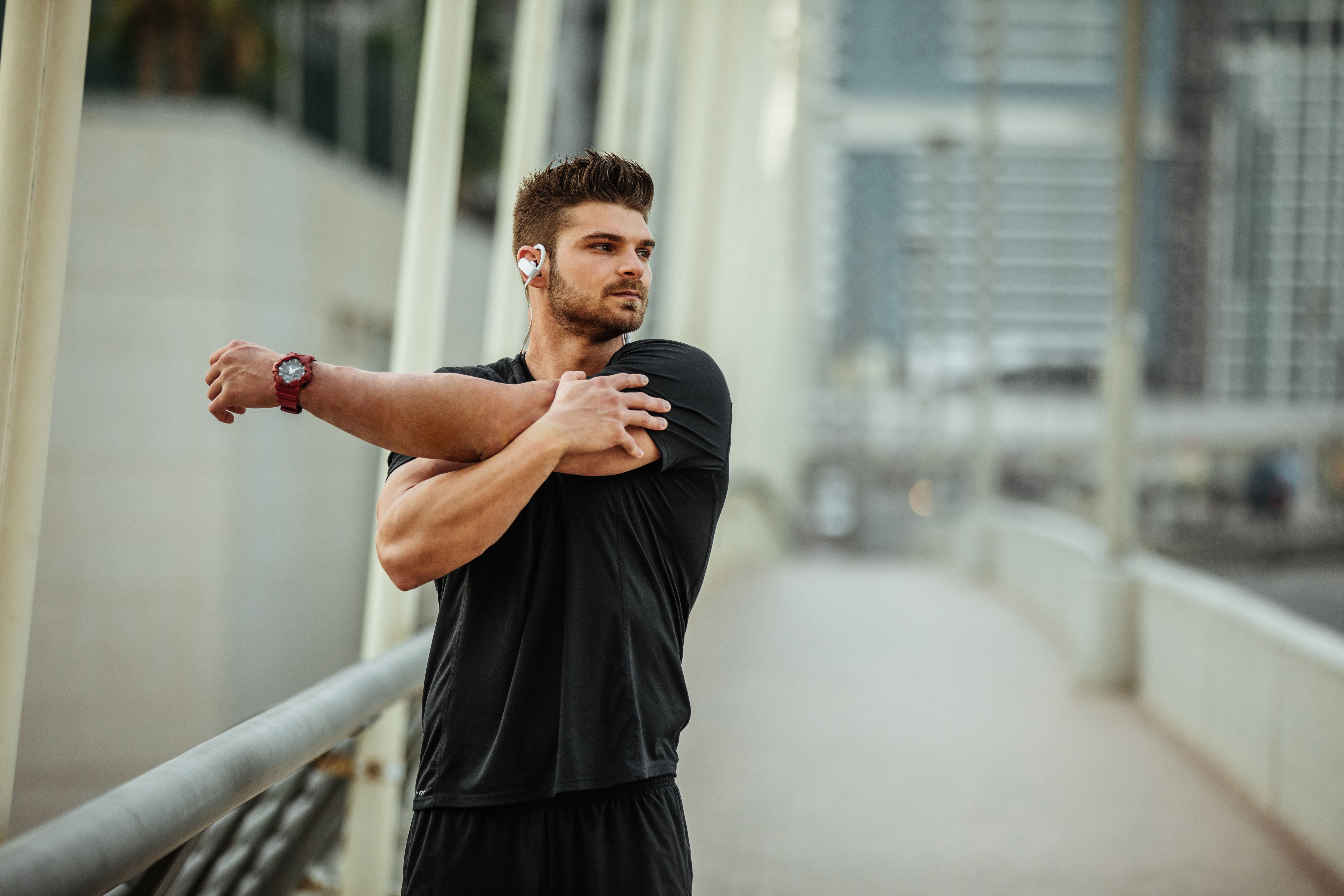What is Meditation?

Before learning how to meditate, we must have an introduction to meditation. While physical exercise focuses on training and strengthening your muscles, meditation is a mental exercise for your brain. The practice of meditation has been around for thousands of years and there are several ways in which it can be practiced.
While there are many different ways you can meditate, at its core, meditation is essentially the practice of directing your attention internally by typically orienting yourself in a certain position and focusing on a certain phrase or action called a mantra. Mantras can consist of certain phrases, affirmations, or even physical actions like walking or breathing that you can use to help direct your attention away from your thoughts during this time. Meditation is the training of your attention and the practice of separating your focus from thoughts about the past, future or any negative thought really, and simply focusing all of your attention in the present moment.
Some common types of meditation are:
- Mindfulness Meditation – This form of meditation encourages the meditator to remain in the present moment by focusing on their surroundings and observing their breath. Usually with slow and deep breaths the meditator solely focuses on the sensation of their breath and therefore ignoring all other thoughts.
- Transcendental Meditation – This form of meditation is when the meditator is attempting to become greater than their current state, often using a mantra. With this mantra, you might decide to affirm a positive thought, goal, or even attempt to manifest new possibilities in your life
- Loving-Kindness Meditation – This form of meditation is when the meditator attempts to open their heart and emanate an attitude of love and kindness towards everything using mantras and visualization. During this meditation you can work on receiving and sending love to yourself, someone else, or just the world in general (Types of Meditation)
Why Should I Meditate?
The idea of meditation is to consciously quiet your mind and your thoughts by directing your focus internally, instead of externally. By directing your attention and focusing on a specific mantra, this allows you to separate yourself from other thoughts and constantly bring your attention back to the present moment.
Whenever your attention is interrupted and starts to drift back into wandering thoughts, direct your focus back to the present moment by returning to your mantra. This constant action of bringing your attention away from acknowledging thoughts about the past or future and bringing it back to the present moment, is the goal of meditation. This can have many benefits for your health as you will see later in the article.
How do I Meditate?
Meditation practices can look and sound very different from person to person.

While many people, myself included, prefer to meditate while sitting on a meditation pillow (traditionally called a Zafu), meditation can really be done in any quiet place where you are comfortable and can fully concentrate. This being said, in order to maximize the benefits from meditation it is crucial that you find a place and position that is the most comfortable for you. Because the goal is to direct your attention inward, you want as little distractions from the outside world as possible.
Personally, I feel the most comfortable when I am meditating by myself in a quiet room with headphones, either listening to guided meditations or binaural beats. These can be found all over the internet for a variety of different meditations. Guided meditations are something you can choose to listen to while meditating and usually consist of soothing sound frequencies combined with an audio track of someone’s voice telling you ways to relax your body or direct your attention internally in order to enhance your meditation. These are great for beginner meditators as well as more experienced meditators looking to switch up their current meditation practice. Here are two of our videos created with binaural beat technology to listen to while you meditate:
In a quiet room with my headphones I like to sit on a meditation cushion with my legs crossed, my back straight, and my shoulders back. I make sure to sit on the cushion with my hips slightly elevated above my knees with my palms resting barely off the edge of my knees, keeping my elbows roughly bent at a 90 degree angle. In this position, I start by taking a few deep breaths and focusing all of my attention on my breath. I focus on my breath fully filling my lungs and the expanding sensation of my chest. This is my mantra. The soothing feeling and deep repetitive rhythm is what brings my attention back to the present moment every time my mind starts to wander.
To become fully relaxed, I start consciously trying to relax each and every one of my muscles starting from the top of my head, all the way down to my toes.
I start by releasing all tension in my head by focusing on relaxing my forehead, my eye muscles, and releasing/unclenching my jaw. I then move down to my shoulders and upper body and slowly relax both arms starting from my shoulders and slowly moving down to each one of my fingers. I then move down to my lower body and consciously try to release tension in both legs all the way down to my toes. Depending on my focus and intent with my meditation, doing this makes me feel almost entirely relaxed, extremely comfortable and in-tune with my body, and free from all worry and anxiety. I like to remain present in this feeling and stay as focused as a can, until I can no longer do so.
No matter how long you decide to meditate for, which position you use, or whether or not it is guided, by far the most important thing you can do is to dedicate your time and full undivided attention to each and every session. It is also very important that this practice is done on a frequent basis, every day if possible. The more you practice and set time aside to meditate, the easier it will become and the more benefits you will notice.
What are the benefits of meditation?
By practicing meditation and learning to notice and separate yourself from your thoughts rather than living inside of them, you start to gain a perspective in which you are much better able to identify any negative and ill-serving thoughts that you might normally have. When you start to observe how often these thoughts come to your mind during meditation, you realize how frequently they can appear throughout the day and how many times you are given the opportunity to engage in that thought or not. Just because you have a thought does not mean it is true or that you should focus on it.

Meditation helps you start to recognize these kinds of negative thoughts and over time through consistent practice you become more aware when you are giving attention to those negative thoughts and letting them stay in your mind. You wouldn’t let a stranger or an uninvited guest stay in your home everyday would you? So why should you allow the same for those uninvited and distracting thoughts?
This conscious practice of learning to separate yourself from anxious or ill-serving thoughts can have great benefits. According to the Mayo Clinic, practicing meditation can have overarching positive effects in concentration, relaxation, inner peace, stress reduction and fatigue (Meditation).
In a review published in 2014 in the journal of JAMA International Medicine, 47 trials involving the effectiveness and therapeutic benefits of meditation were reviewed and it was concluded that meditation lead to moderate improvement in anxiety, depression, and physical pain, and other small improvements were found in improved stress levels and an increase in quality of life (Meditation Programs for Psychological Stress and Well-being).
Also, according to the NCCIH (National Center for Complementary Integrative Health) meditation can also be useful for helping high blood pressure, irritable bowel syndrome, ulcerative colitis, insomnia, quitting smoking, and more. It is also found that meditation may even increase the brain’s processing ability and in a few studies it’s been shown that meditation can potentially slow or diminish the effects of brain aging. (Meditation: In-Depth)
It is no surprise that the number of meditators has increased dramatically since many of these studies have been published. In fact, the number of US adults who meditate has increased from 4.1% of adults in 2012, to 14.2% in 2017 (National Survey Reveals Increased Use of Yoga, Meditation, and Chiropractic Care Among U.S. Adults). It is our goal with this information to increase that number and spread awareness about this commonly misunderstood practice that has had a great effect on our lives at www.thirdeyeguys.com
Conclusion:
In my own personal life since starting and maintaining a consistent meditation practice, I have noticed that my ability to direct my undivided attention has increased and I can keep this attention directed longer. I have also noticed that my immediate emotional reaction to stressful events has diminished greatly, and it has decreased my overall levels of stress and anxiety by being able to notice and direct my attention away from anxious thoughts. If you enjoyed this article and would like to read more from us, check out our most recent blog below!
Resources:
Goyal, M, et al. “Meditation Programs for Psychological Stress and Well-Being: A Systematic Review and Meta-Analysis.” Deutsche Zeitschrift Für Akupunktur, vol. 57, no. 3, 2014, pp. 26–27., doi:10.1016/j.dza.2014.07.007.
“Meditation.” Mayo Clinic, Mayo Foundation for Medical Education and Research, 15 Apr. 2020, www.mayoclinic.org/tests-procedures/meditation/about/pac-20385120 .
“Meditation: In Depth.” National Center for Complementary and Integrative Health, U.S. Department of Health and Human Services, www.nccih.nih.gov/health/meditation-in-depth.
“National Survey Reveals Increased Use of Yoga, Meditation, and Chiropractic Care Among U.S. Adults.” National Center for Complementary and Integrative Health, U.S. Department of Health and Human Services, 8 Nov. 2018, www.nccih.nih.gov/research/research-results/national-survey-reveals-increased-use-of-yoga-meditation-and-chiropractic-care-among-us-adults.
Villines, Zawn. “7 Types of Meditation: What Type Is Best for You?” Medical News Today, MediLexicon International, 22 Dec. 2017, www.medicalnewstoday.com/articles/320392.


